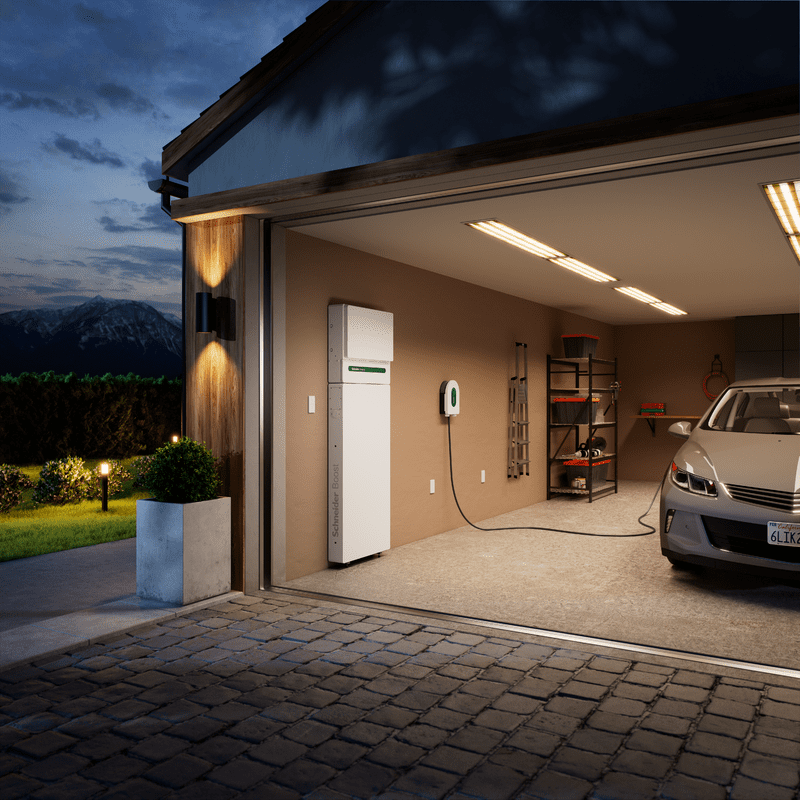As the first generation to grow up with access to the internet, social media and smart devices, Gen-Z has a clear understanding of the impact of electricity and technology on day-to-day life in 2024.
However, in a world where huge technological advances are being made all the time, there are bound to be certain technical tools that Gen-Z is perhaps overlooking.
One example of this is the electrical panel, sometimes known as a circuit breaker panel, or breaker box, which according to our latest global survey, 41% of Gen-Zers don’t what its function is and 25% have no clue where it’s located in their home.
This key technology has shaped the way we distribute and utilise electricity in our homes, but its importance isn’t properly recognised and understood. Here, we break down the key facts that Gen Z need to know about the electrical panel.

What is an electrical panel and why is it important?
Simply put, an electrical panel is a distribution system for your home, that safely manages the electricity being provided to your appliances.
On the electrical panel are breaker switches, which help to keep our homes safe. If the electrical circuit becomes overloaded – say, for example, too many appliances and devices are plugged in and drawing electricity all at the same time – this will trip a breaker and automatically shut off the electricity supply to prevent electrical fires or the risk of electrocution.
The history of the miniature circuit breaker in homes dates back 100 years. As electricity demand grew, the need for safe, manageable, and reliable distribution systems became evident. Circuit breakers came to replace fuses, that were common back then. And over the years there have been many different types of electrical panels.
The fuse box – a simple yet crucial development – marked the first step towards organised electrical distribution. Originally, these boxes contained fuses which were designed to melt and interrupt the circuit in case of a current overload or short circuit.
While these were functional and innovative, replacing fuses and wires was time-consuming and often required the expertise of a qualified electrician. Circuit breakers revolutionised the safe distribution of electricity, allowing for a reset to be made after tripping, eliminating the need for constant replacements.
As electricity demands grew, particularly in larger buildings and homes, so did the need for more organised and efficient distribution. Panelboards emerged, allowing for the consolidation of multiple circuit breakers into a single enclosure.
Over time, this technology became more efficient and effective, eventually evolving into the smart panels of today – which Gen-Z homeowners may unknowingly be more familiar with, thanks in part to the method in which we engage with our panels today.
Where can I locate my electrical panel?
Your electrical panel can likely be found in an accessible and safe location. For many homes, you can usually find it in places such as a garage or basement if you have one, as this allows you to keep the panel a little more out of sight, but hallways, entryways and utility rooms may also be possibilities.

Does an electrical panel require maintenance?
Given the crucial role it plays in your home, it is important to make sure your electrical panel is regularly checked to ensure it is in good working order. To find out how often you should be checking your electrical panel, check out our blog here.
When might I need to upgrade my electrical panel?
If you’re experiencing issues or faults with your electrical panel, then it’s time to contact a local electrician to get it upgraded.
Additionally, you may need to upgrade it when adding in new large electrical loads to your home. For example, many of us are now making more sustainable lifestyle choices, such as switching to electric vehicles, which in turn means more EV chargers are being installed at home. This is a significantly large electrical load, which could increase your demand to exceed your current supply capacity, and if not upgraded will trigger your electrical panel to trip. Likewise, if you are installing solar panels to your home, you may need to upgrade your electrical panel due to the increased power capacity coming into it. In this case, your solar installer may ask you to upgrade your electrical panel as part of the installation. However, a simple retrofit solution is the Resi9 Energy Center, which can be added to any existing electrical panel to increase its capacity, making it an affordable solution that eliminates the need to replace the entire panel.
If in doubt, you should always speak to your local qualified electrician, who will be able to advise on whether an upgrade to your electrical panel is required or not.
What else can an electrical panel be used for?
It is no secret that Gen-Z takes sustainability around the home seriously. Modern smart panels can allow us to monitor and manage the energy loads using a smartphone or computer apps, which show how much power each circuit in the home is drawing.
In turn, this allows you to shut circuits on and off as needed, as well as prioritising or scheduling thus preventing overloading circuits.
Areas of the home with critical power loads, such as the refrigerator or heater in the winter, can be prioritised to remain on. An EV can get plugged in when you get home, but the panel can delay charging until a time when utility rates are most favourable, helping to save on your energy bills.
Whilst hopefully, this quick-fire guide to the electrical panel is a helpful introduction for the next generation of homeowners, there is still plenty more to learn about what ultimately is the brain of our homes. Keen to learn more? Check out our blogs that delve deeper into the history of the electrical panel and why it’s the heart of the home.



Add a comment